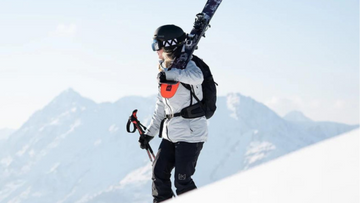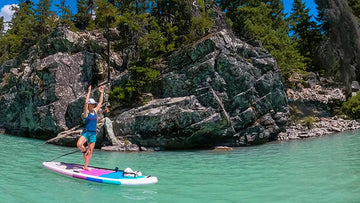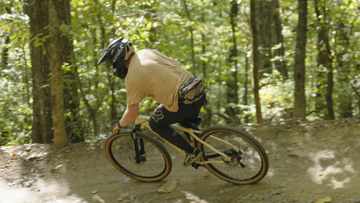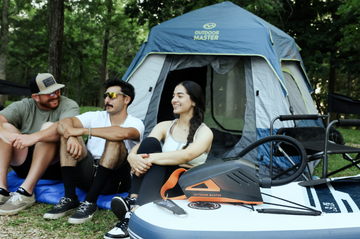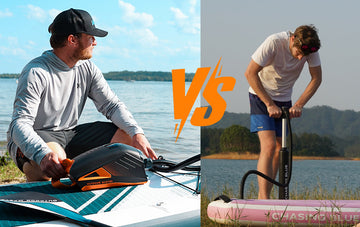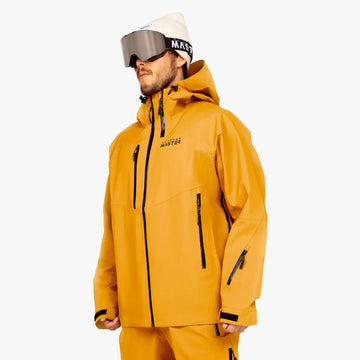
Skiing can be a fun and exhilarating winter sport, but it’s important to have the proper gear in order to make the most of your experience.
One essential piece of equipment is a good pair of ski goggles. Here are 17 things you need to look for when picking out a new pair of ski goggles:
Table of content
Why do you need ski goggles? How to pick ski goggles – 17 Things to consider 1. Size 2. Lens shape 3. Lens VLT (Visible Light Transmission) 4. Lens color 5. Price 6. Polarized vs non-polarized 7. Color enhanced 8. Anti-fog features 9. Lens swap system 10. Extra Lenses 11. Helmet compatibility 12. Comfort 13. Low Bridge fit or Asian fit goggles 14. Women’s specific goggles 15. Style 16. OTG Compatible 17. Smart Ski Goggles Wrap UpWhy do you need ski goggles?
Ski goggles protect your eyes from the bright sun and glare off the snow. They also help to keep wind and cold air out of your eyes. They protect your eyes from getting blasted by snow or if you’re really unlucky rain and sleet.
In case of a fall, ski goggles can prevent serious eye injury. Ski goggle vents work with ski helmet vents so you can’t get much better anti-fog performance from ski goggles.
What should you look for when shopping for ski goggles?
There are hundreds if not thousands of choices out there these days. The lingo and terms from goggle makers can make things even more confusing.
What is OTG? What is so special about ChromaPop or PRIZM? Let’s take a look at all the things you should look for when buying ski goggles.
How to pick ski goggles – 17 Things to consider
1. Size

Make sure to get goggles that fit well, with straps that will keep them securely in place on your head.
Goggles come in small, medium, large, and XL sizes.
There is also junior sizes for kids.
Different sizes work for different face shapes and sizes. Someone with a smaller face should try small or medium fit goggles.
If you have a larger head go for large or XL fit goggles. Some people just like a big goggle look and will go large or XL regardless of their face shape or size.
Interaction with your helmet will play a big role in what goggle size works for you.
A small fit goggle will not work great with a large size helmet. The helmet will be too wide and pull out on the goggle straps.
You should always try your goggles on with the helmet you plan on wearing to see how well they will fit.
2. Lens shape
There are three main lens shapes used on ski goggles: cylindrical, spherical, and toric. You can get really good performing goggles with any lens shape.
3 Common ski goggle lens shapes
Cylindrical

USE CODE OMBLOG20 FOR 10% OFF
A lens cut from the side of a cylinder. It is curved in only the horizontal direction.
This is the cheapest lens to make because it can be cut from a flat sheet of plastic. It has the most distortion because the lens shape doesn’t match the shape of your eyes and natural field of view.
There are tricks that can be played to reduce distortion such as varying the thickness of the lens. These goggles have a more retro look with their flat shape.
A lot of professional freestyle skiers and snowboarders choose cylindrical lens goggles for the look.
Spherical

Spherical Lens (Pro Plus) Shop on Amazon
USE CODE OMBLOG20 FOR 10% OFF
A lens cut from the side of a sphere. It has the same radius on the horizontal and vertical directions.
This lens offers low distortion and good field of view. The goggles have a more modern look thanks to their curvy shape.
Toric

Toric Lens (Vision) Shop on Amazon
USE CODE OMBLOG20 FOR 10% OFF
A lens cut form a taurus or donut shape. It has a larger radius in the vertical direction than the horizontal direction.
They have a more lean looking shape that doesn’t bulge out as much as spherical lenses. This lens shape has the least distortion and potentially the best field of view.
3. Lens VLT (Visible Light Transmission)
The lower the number, the darker the lens will be. Most ski goggles have a VLT rating between 15% and 50%.
-
VLT range for sunny days – 5% to 12%
-
VLT for cloudy days – 12% to 20%
-
VLT Range for flat light – 20% to 60%
-
VLT Range for night skiing – 60% to 99%
Photochromic lenses
Photochromic lenses have a variable VLT. They get darker the brighter it is outside.
They have a limit to how much they can change which is usually 30 to 40%. You might find a 20-50% VLT photochromic lens or 30-60% VLT lens. I haven’t see a photochromic lens that gets dark to less than about 20%.
They are usually best for cloudy and flat light days and okay for night skiing. They usually leave you wishing for a darker lens on a really bright day.
4. Lens color
-
Yellow or orange color lenses work best for flat light.
-
Dark colors such as black work best for really bright sunny days.
-
Clear works best for night skiing.
With Revo or Mirror finished lenses you can have any color lens on the exterior and a different color on the interior. You can get a good 20%-30% mirror finish flat light lens that is colorful on the outside and looks like an orange or amber lens from the inside.
You don’t need to settle for boring looking orange and yellow lenses for cloudy and flat light days.
5. Price
You can spend $20 to $500 on a pair of ski goggles? Is $20 enough? Is any pair of $500 really worth it? You can get full featured ski goggles with excellent color enhanced lenses and magnetic lens change system for $100 or less.
For less than $50 you will be making some kind of compromise on features. If you spend way above $100 there is a good chance you are paying more for the brand name and style than anything else. $100 is kind of the sweet spot for the best value in ski goggles. See this guide to the best $100 ski goggles for some great options.
6. Polarized vs non-polarized

Polarized Lens
Polarized Technology offers a clearer and frameless view, which massively reduces glare, reinforces contrast and natural color, and brings out finest details.Polarized lenses reduce glare from bright light sources such as the sun or snow reflecting off surfaces. They only allow light to pass from certain direction.
They work great for bright sunny days where there is a lot of glare and reflections. In some situations, polarized goggles can make it harder to see the snow surface. They aren’t recommended for flat light conditions where you are trying to amplify the shadows and reflections to see the surface better.
7. Color enhanced/Color optimization

Color-Optimization Technology
Color-Optimization Technology provides high definition optics by filtering part of the blue light and thus boosts the contrast and greatly improves color brightness.
Some lenses are designed to enhance your vision such as Oakley PRIZM, Smith ChromaPop, Outdoor Master Ultra, and SPY Happy lens tech. This can be helpful in differentiating between terrain features and making it easier to see in low-light conditions.
They work by filtering out some shades of blue. This makes it easier to see differences in the snow surface that otherwise just look white. Color enhanced lenses all have a yellowish orange look from the inside. They can look any color from the outside.
8. Anti-fog features

Anti-fog ski goggles
Many ski goggles have special anti-fog coatings or ventilation systems that help prevent the lenses from fogging up while skiing. Almost every pair of ski goggles has these 4 features. All anti-fog coatings aren’t created equal. Some goggles work much better than others at keeping the fog away.
Face foam – Create a seal to keep moisture out and wick sweat away
Anti-fog coatings – coating on the lens prevents water and moisture build up on the lens. If water runs off fog won’t form
Double pane lenses – Double layers create a better insulated inner lens surface that resists water condensing on it
Ventilation – Air flow through the goggles will transport moisture out of the goggle.
9. Lens swap system

Magnetic Interchangeable Lens System
Some goggles have a magnetic lens swap system that makes it easy to change out lenses in different light conditions. Others have latches or a ridgelock system that lets you swap out lenses without having to remove the entire frame.
Rubber frames with notched lenses – This is the oldest lens change system. The lenses are attached to the frame with small notches that the frame inserts into. It takes some effort and time to swap lenses. These systems got a little better such as the Smith IO goggles where they added a couple of latches so it could be done a little faster.
Ridgelock systems such as Oakley – This system has a ridge molded into the edge of the lens that goes into a slot in the plastic goggle frame. It is much quicker than traditional lens swap systems. It still has the problem that you can’t change lenses with the goggle on your head or helmet. It does create a very low profile goggle frame without much size increase.
Latches – These goggles have a couple of latches that you unhook with your fingers. The lens may have a few pegs or slots to help with alignment. The Outdoor Master Pulse XL is the best version of this I have seen. It is almost as easy to swap lenses as a magnetic system.
Magnetic – Magnets are used to hold the lens to the frame. They use anywhere from 6 to 8 magnets. The lens is held very secure and there is no need for anything else to keep the lens in place. You can quickly swap lenses with the goggles still on your face or helmet. This is my favorite and preferred lens swapping system.
Magnet and latches – Some people don’t trust the magnet only systems. Some goggle makers have added a couple of latches to the outer edges of the frame. To swap lenses you have to undo the latches and then pull the lens away. Snap the lens back in place and close the latches. I have seen some goggles with these systems where you can swap lenses with the goggles on your face such as the Smith Squad Mag and Wildhorn Pipeline/Roca. I have seen others where you cannot change lenses without taking the goggles off such as the Smith IO Mag.
10. Extra Lenses

VISION Toric Goggles + Bonus Lens
Toric lens, Anti-Fog Coated & Enhanced Polarized lens
USE CODE "OMBLOG20" FOR 10% OFFBUY NOW
Just because a set of goggles has a really nifty slick lens change system doesn’t mean they are giving you an extra lens to use it. You need to pay attention when buying goggles to see what is included.
If you need a bright lens and a flat light lens, it is best to buy them both at the same time. Goggles change from year to year. Sometimes just enough that lenses no longer work. Factor this into the cost of your goggles.
11. Helmet compatibility
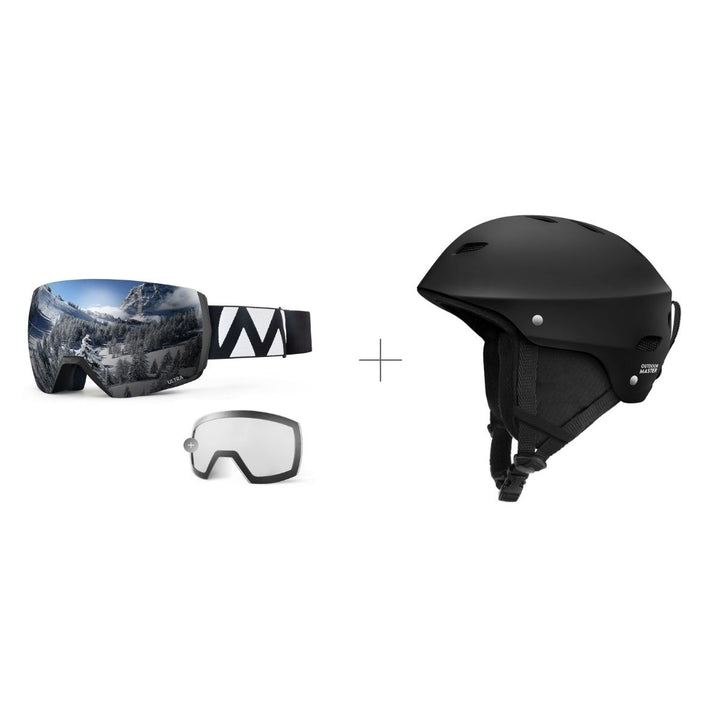
WINTER BUNDLE SALE - ULTRA BUNDLE + KELVIN SKI HELMET
USE CODE "OMBLOG20" FOR 10% OFF
BUY NOW
If you plan on wearing a helmet while skiing, make sure to get goggles that are compatible with your helmet and will fit snugly without gaps. No one wants to have a big gap between the top of your goggles and helmet. This is known as being a Gaper and it’s not a complementary term. You will get the best fit between helmet and goggle by staying with the same brand for both.
Most goggle manufacturers seem to have settled on a similar shape for the top of the goggles so most combinations don’t produce much gap. Wearing a thick hat or wearing your helmet tipped back will make a large goggle gap with any goggle/helmet combination.
12. Comfort
In addition to fit, look for goggles that are comfortable to wear and don’t cause any irritation or pressure points.
All ski goggles do not have the same frame shape. They can have different curvatures and different nose shapes.
The only real way to know if a set of ski goggles fits your face really well is to try them on. Keep in mind that helmet interaction also matters.
Always try your goggles on with the helmet you are using.
13. Low Bridge fit or Asian fit goggles
There are a few goggles out there that claim to be women’s goggles. They are a medium to small fit in size.
They can have a slightly smaller nose piece to account for differences in face shape. Most ski goggles are unisex. Most people can find the right fitting goggle by trying different brands that have different frame sizes and shape.
14. Women’s specific goggles
There are a few goggles out there that claim to be women’s goggles. They are a medium to small fit in size. They can have a slightly smaller nose piece to account for differences in face shape. Most ski goggles are unisex.
Most people can find the right fitting goggle by trying different brands that have different frame sizes and shape.
15. Style
Goggles come in a variety of styles, so you can choose a pair that matches your personal taste and skiing gear. The 2 main styles are framed and frameless goggles.
Framed – Frame goggles have a plastic or rubber frame around the outside of the lens. It is clearly visible around the lens.

Oakley Line Miner framed goggles
Frameless – Frameless goggles have lenses that cover the frame. You only see the lens when looking at them from the outside.

Outdoor Master Ultra frameless goggles
USE CODE OMBLOG20 FOR 10% OFF
There are goggles that have different variations of these with smaller or larger amounts of frame. The main purpose for these is looks. You can make a framed or frameless goggle with a very wide field of view and any other feature.
16. OTG Compatible

OTG (Over-the-glasses ) Design
The OutdoorMaster Snow goggles come with an OTG design that allows you to wear your glasses comfortably under the goggles. (Maximum size for glasses: Length: 5.3’’ Width: 1.65’’)
OTG or Over The Glasses goggles fit over prescription glasses. Some OTG glasses have features like notches in the frames so that they fit more comfortably over a set of glasses.
Large fit or XL fit goggles tend to work better because they have more space which lets the ventilation work better.
17. Smart Ski Goggles
There have been a few smart ski goggles produced so far. They have features like displaying your speed and other information on a small screen inside the goggles. None have really caught on or been too successful yet. I expect that to change in the future.
RideOn has been promising an interesting augmented reality goggle for a few years now but they still aren’t available. A new company called Rekkie has started selling a set of smart goggles with a Heads Up Display or HUD in the goggles.
Wrap Up
Now that you know what to look for when picking out a new pair of ski goggles, it’s time to get shopping!
Remember to use code OMBLOG20 for 10% off.
Be sure to try on different pairs and find the ones that fit best and have all the features you need. And most importantly, have fun skiing in your brand new goggles!


